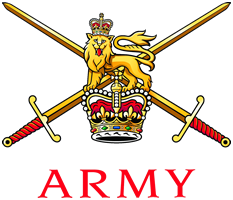Using GIS for decision support during times of national crisis
When natural disasters, terrorist incidents or strikes occur in the UK, it is the job of Headquarters Land Forces (HQ LF) to coordinate an effective – and often immediate – response by the British Army. The organisation now uses Esri’s ArcGIS platform to share information, make rapid decisions and take the most appropriate action to protect citizens.
The Customer
Headquarters Land Forces (HQ LF) is located across three sites in Wiltshire. It is responsible for the recruitment, training and development of servicemen and women, and commands all of the Army’s UK activities, including responses to natural disasters, terrorist incidents, and strikes.
ArcGIS gives HQ LF instant access to information about local hazards, helping to protect the lives of servicemen and women and the general public
HQ LF can now plan the army’s response to emergencies far more quickly, as all the information it needs is instantly accessible, in one place
Commanders can share maps, in real-time, with regional planning teams during situation briefings, to aid coordination and rapid decision-making
The Challenge
During national emergencies, HQ LF is responsible for coordinating military support for the emergency services. This requires instant access to a wide range of up-to-date military and civilian data.
A new information management system was needed to better coordinate emergency responses. As most of the data contained location information, a geographic information system (GIS) was the obvious choice. “We needed a better understanding of what facilities and resources were available in the UK to support emergency operations”, says Lieutenant Colonel Alan Honey. “We realised that the best way of doing that was through the medium of maps.”
ArcGIS enables us to provide a more rapid response […] Information that would have taken a long time to track down before, is readily available now
Lieutenant Colonel Alan Honey – British Army
The Solution
HQ LF selected Esri’s ArcGIS, because it is widely used in the UK defence community, and many of the Army’s geographic staff were already familiar with it. In addition, an HQ LF sergeant received comprehensive training at the start of the project, and consultancy support was used so that the solution was developed to meet the Army’s needs exactly and quickly: interfaces with existing database and other applications, coupled with making maps accessible over the intranet.
The project team collected military information from all divisions of the army across the UK, including the locations of camps, medical facilities, armouries, catering and other resources. “We then started to look for other types of information that might be useful”, explains Honey. “We quickly realised that if we were going to support government departments, we needed cross-government information too.” The team therefore worked closely with the Department for Communities and Local Government, which also uses Esri GIS solutions, meaning HQ LF found it easy to transfer relevant data to its own developing solution.
Called LUNDY, the GIS-driven portal is accessible across the Army on the restricted security level of the Ministry of Defence (MOD) intranet, as well as within the Royal Air Force and Royal Navy. In an emergency, regional teams use LUNDY to support decision-making, plan responses, generate hard copy briefing maps, and coordinate more effectively between HQ LF and external organisations. “ArcGIS therefore serves both those on the network and those on the ground”, says Honey
Video conferencing can also be linked to LUNDY. This enables commanders at headquarters to view and share maps, in real time, with regional planning teams close to an incident. “We can draw on the map and highlight key hazards, for example, while briefing teams about how to respond to situations”, says Honey.
Everyone sees the same picture. This enables us to make better decisions about the deployment of our people and coordinate more effectively with other emergency services
Major James Kemp – British Army
The Benefits
Innovative GIS means HQ LF is now much better prepared and more capable of responding effectively to the unexpected. “ArcGIS enables us to provide a more rapid response”, says Honey. “It also enables us to provide a better response, because people have access to information about the locality, local resources and hazards… Information that would have taken a long time to track down before, is readily available now”, he adds.
LUNDY’s worth was proven in the Gloucestershire floods and regional fire service strikes. Rapid sharing of situational understanding assisted hundreds of people whose lives, homes and businesses were at risk from rising water levels, and during the strikes, detailed maps were put in the cabs of fire engines: “Teams responding to incidents could see straight away if the fire was near to a hazardous site”, says Honey. “If we hadn’t had this information about hazards, I believe that the lives of servicemen tackling fires could have been put at far greater risk.”
Building on this success, HQ LF is expanding the system’s scope. For example, LUNDY now includes information on training sites and firing ranges. When an exercise is planned, training officers can access the information that they need directly from the network, including high-resolution aerial imagery. “It has become a key mapping system for all sorts of information on the MOD restricted network”, says Honey.
The next stage is upgrading to the latest version of the core ArcGIS software. The enhanced system will make it easier for regional control teams to maintain and edit their own data, and to perform detailed data analysis on the fly. Significantly, it will allow HQ LF to more easily share its data with other emergency services and create links with web services operated by government departments and external organisations. “We plan to upgrade the hardware and software to make the entire solution even more resilient and capable”, says Major James Kemp. “We want to give users the tools and responsibility to maintain their own data and develop new services which we can deliver over the intranet.”
Honey concludes, “ArcGIS has enabled us to make a great step forwards in providing better mapping tools on military networks. It enables much wider sharing of information and can be expanded to provide support for all areas of military work.”



